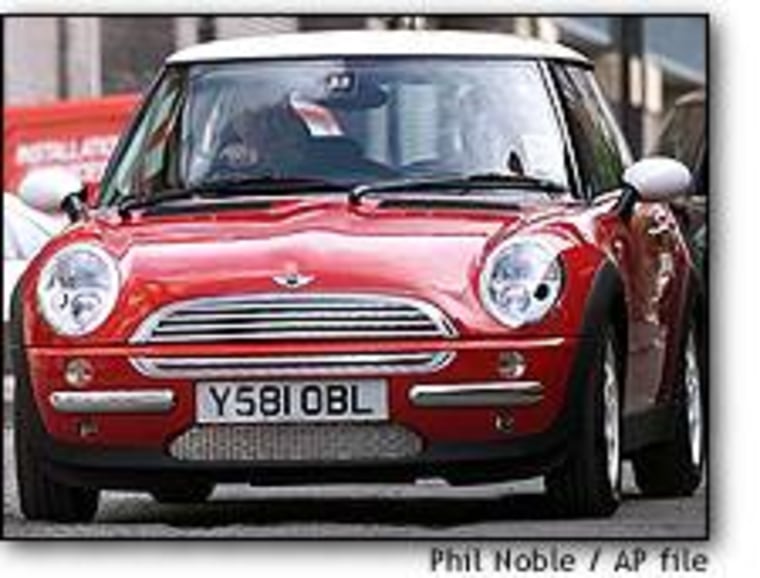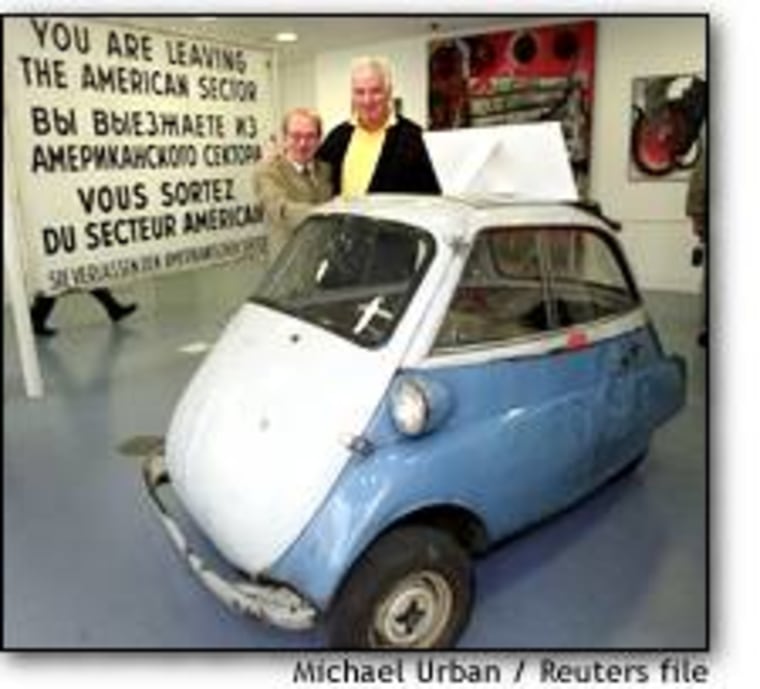Businessman Steven Beaty was able to bring one of DaimlerChrysler’s hot-selling Smart cars last year to the states and had a blast driving it around Orange County California for six months. He said people swarmed around to get a look at the novelty. “The reaction was fantastic.” But for millions of motorists in Europe and Asia, such minicars are simply a way of life, born out of economic necessity.
With steep gas prices, narrow streets and a history of thinking small, even a Volkswagen Golf is considered a big car in Europe. So, Volkswagen created an even smaller, just-for-Europe version — the Polo, which gets 45 miles per gallon. But VW’s adventures in shrinkage didn’t stop there. For the really economy-minded, Volkwagen produces the Lupo — a three-door hatchback for around $16,000 that gets between 78 mpg and 90 mpg and seats four.
In America, where nearly half of new vehicle buyers purchase pickups, minivans or sport utility vehicles, a Polo may seem like a doll’s car. But overseas they are no oddities.
Minicars account for one-third of all new cars sold in Japan, where a gallon of gas could put you back as much as $5. During the country’s decade-long economic slowdown, minicars have been a popular and inexpensive option for Japanese buyers.
Europe’s more tolerant motorists
In Europe, as well, minicars are all the rave. Some 35 percent of all car sales on the continent are minis. That is understandable in a region that is far more compact than the United States, where gas prices range from the mid-two dollars per gallon to well over $4, and where public transportation is generally more convenient.
Big iron
In the United States, however, compact cars — not even mini by European standards — account for under 10 percent of the market, said Tony Swan, executive editor of Car & Driver magazine, based in Ann Arbor, Mich.
“The problem is we have the cheapest gas on the planet even with rising gas prices,” he said. “People just aren’t buying small cars.” According to the latest figures, nearly one in five passenger vehicles sold in the United States is an SUV. And Swan said that trend is likely to continue, especially with Americans desire for safety. “We like to be in big iron, he said.
While some countries may have cheaper gas, gasoline in the United States compared to the average income, probably makes it the most affordable.
Maybe a market?
But Steven Beaty, the executive high on DaimlerChrysler’s Smart cars, thinks minicars could grab a toehold in the United States.
“When people get in and drive them, they have a different opinion,” he said.
Beaty is president of Brabus North America, a company that customizes expensive Mercedes Benz and now tiny Smart cars. The company can “trick out” a $9,000 Smart car with everything from horsepower, leather interior, special wheels, and a voice-activated multimedia system with a TV, DVD, telephone and satellite navigation to boost its price to $40,000. Beaty describes a Smart car as a second car — not one you’d take on long roadtrips or even the freeway, but a fun, get-around-town car that can cruise at 60 mph.

He said DaimlerChrysler will decide by the end of the year whether it will start selling Smart cars in the United States.
Some auto analysts, however, say DaimlerChrysler’s quirky Smart car suffers from image problems. They say the car looks like an elephant sat on it; others call it a golf buggy.
BMW, which is set to launch a new version of its classic Mini, will be selling its car in the United States sometime next year. At a price starting around $15,000, the Mini is pricier than the Smart car but it’s also a lot bigger and faster. Several auto analysts predict that the new Mini will crush Smart car sales in the U.S. market.
Economic necessity
While many view minicars as a great second car, others see it as the only car. Gas prices in Europe are typically $3-$4 a gallon. In, Italy, the streets are so narrow, not much else will fit. In Tokyo, parking is so hard that before you buy a car, you must prove you have a place to put it. And in Britain, company cars — about half the car market — are now being taxed on emissions, forcing people to buy more fuel-efficient cars.

“I think a lot of people would want to buy a bigger car but they can’t afford it,” said Richard Dredge, senior editor at BBC TopGear Online, a popular monthly car magazine and TV show in England.
Dredge, who drives a 1969 Triumph, said one of his most favorite minicars is the VW Polo.
“It’s really well made and nice to drive,” he said.
In the United Kingdom, he said the top five selling supermini cars in 2000 were the Ford Fiesta, Vauxhall Corsa, Peugeot 206, Renault Clio and Fiat Punto. (The Smart car just started being sold in Britain in October 2000). He said the top-selling car in Europe was the Fiat Punto, which starts out at around $12,000.
Dredge said while minicars are little protection against a truck, they are surprisingly safe because they come with air bags, side impact bars and antilock brakes.
“If you are in a small car and you hit another small car, you’re not in too bad a position,” he said.
Bobbi Nodell is a general assignment news reporter for MSNBC.com
